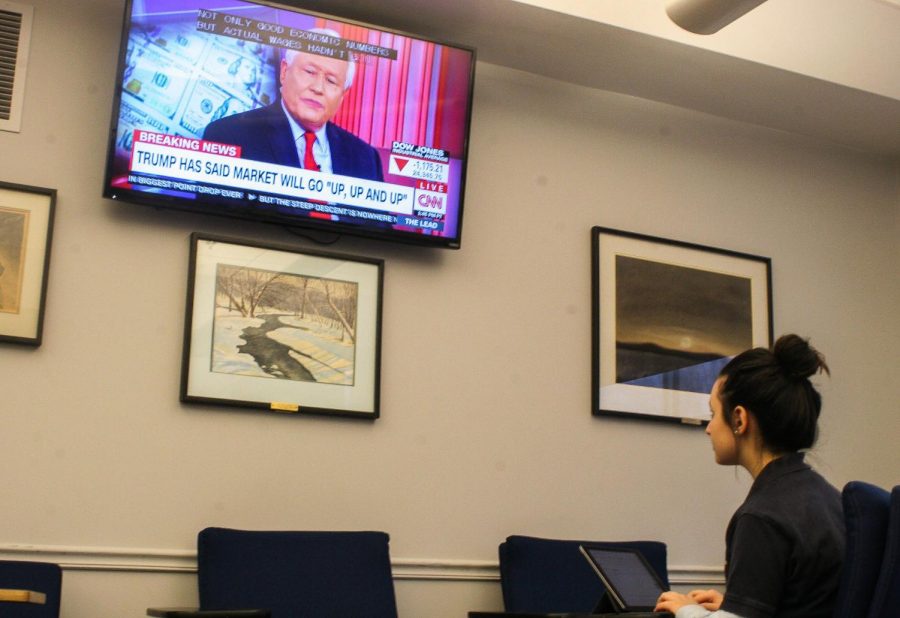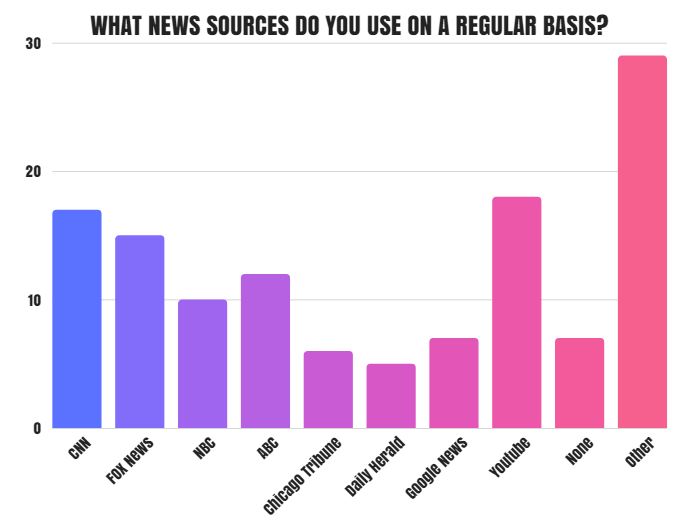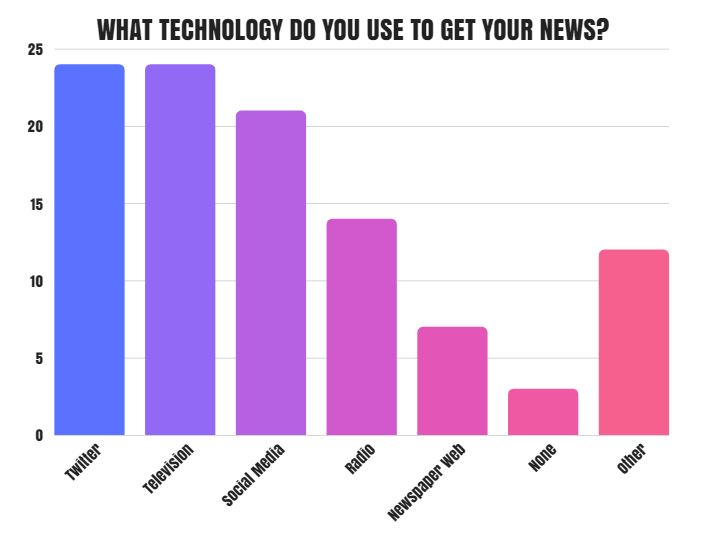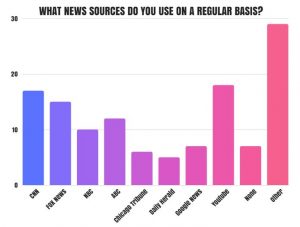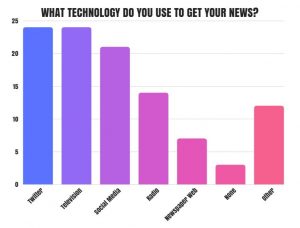Student poll microcosm for national trend
Credibility and polarity concerns for news rise
We live in a time full of controversy and scandal. Therefore, how we get our news is important. It dictates our worldview, how we comment, vote and discuss topics with our friends. The Viator Voice recently polled 45 students in homeroom to see how high schoolers from our private, Catholic high school view the world around them.
The results are primarily what was to be expected but with some unexpected indications of media change. When asked on what news outlets they use on a regular basis, 38% reported CNN and 33% reported Fox News. Most of the students claimed to use some traditional news outlet; ABC News and NBC News, the most moderate of popular outlets, came in at 27% and 22% respectively.
The outliers, however, were those 40% of students who reported using Youtube as a regular source of news. Youtube seems to be an emerging source of news for adolescents. Several students reported using Philip Defranco, a Youtube-based news commenter, as a primary source of media. Last Week Tonight with John Oliver and Infowars, polarly opposite programs, were also reported. Both can attribute their rising fame to Youtube.
The popularity of Youtube news indicates a larger trend: the shift to cyber news. When asked what technology they use for news, half of students reported using television. However, the exact same number of students claimed they use Twitter. Here’s cause for concern…
Social platforms with massive online traffic such as Twitter and Youtube need a way to filter content to each individual viewer. They do this by tracking keywords and tags from every video a viewer watches. A big fan of “Ben Shapiro EVISCERATES liberal invalid?” Well you’re in luck because Youtube will send every “Ben Shapiro EVISCERATES _____” video your way.
Another concern is credibility. In traditional news media, a paper might be released one day, criticism regarding factual content would come out the same day, and the paper would release a retraction the next. In the wild west of Internet videos, chatrooms and timelines, such methods of crowd control are impossible.
“It’s the simple fact that they’ll get facts, but get them well out of context. Because that’s essentially what editing stuff on Youtube does. I can take a sound snippet of ten seconds of someone saying something and then put that on the forefront of what I have to say,” said AP Human Geography teacher, Mr. Cory Jensen.
How else could 9-11 truther, conspiracy theory-spouting Alex Jones of Infowars have gained 2 and a quarter million subscribers on Youtube? Not through sufficient checks on his credibility, that’s for sure.
As cyber-news rises, traditional news sources seem to be dying out:only three students reported reading physical papers. The decay of local news is also notable. 13.3% reported reading the Chicago Tribune, with only 11.1% reading the Daily Herald (presumably the athletes who are actually in it). Out of the 46 students polled, one of them said they read their local paper from a physical copy.
As daily life becomes faster, more complex, and more digital, so does our news. The convenience of this is obvious: communication is instantaneous. But there are always drawbacks. We cannot lose the credibility that has come to be expected of journalism. In short, we cannot forget truth.
Your donation will support the student journalists of Saint Viator High School. Your contribution will allow us to purchase equipment and cover our annual website hosting costs.



